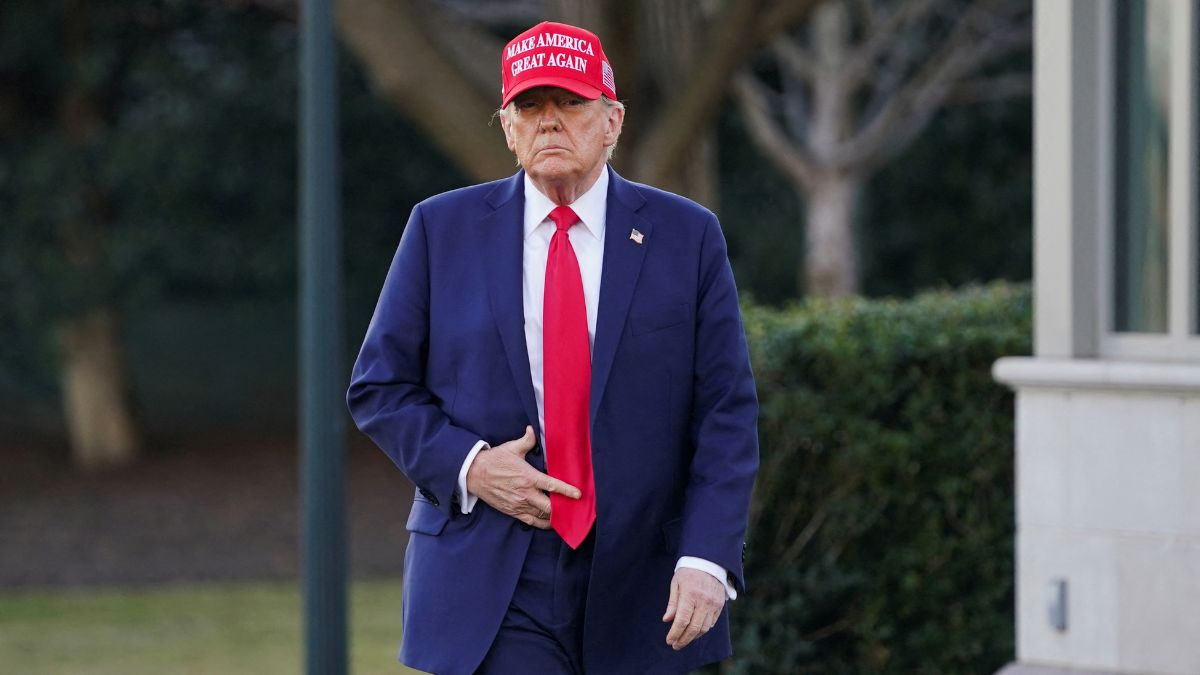US President Donald Trump took the first real steps towards plunging the world into a trade war on Tuesday.
After days of suspense, Trump’s 25 per cent tariffs on Canada and Mexico and 10 per cent additional tariff on China came into effect on Tuesday — these tariffs on China were on top of the previous round of 10 per cent tariff imposed on February 4.
As Canada and China immediately retaliated, the world now stares at a looming trade war where inflation and market volatile may become the norm. Overall, Trump has announced tariffs on goods worth at least $2.3 trillion in targeted as well as across-the-board actions, according to Tax Foundation.
In Trump’s view, the United States has long been gamed by the world. In his view, while these countries sell their products in the United States, they don’t buy US goods accordingly and they have also unfairly taken away US manufacturing jobs. To solve this purported unfair treatment, tariffs are Trump’s solution.
So far, Trump has vowed tariffs for Canada, Mexico, China, and the European Union (EU). He has also vowed tailor-made reciprocal tariffs and sector-specific tariffs, such as on steel and aluminium, which will be applicable to all countries.
Trump fires first salvo — more salvos imminent
Trump on Tuesday fired first salvo in the trade war with 25 per cent tariffs on Canada (except for energy imports that will have 10 per cent tariff) and Mexico and 10 per cent additional tariff on top of previous 10 per cent tariff on China. There were immediate retaliations from Canada and China.
The tariffs came even as Canada and Mexico had entered into trade talks with the United States and taken actions to curb illegal immigration — Trump’s stated reason to impose tariffs was the failure of these countries to stop the flow of illegal immigrants and fentanyl into the United States from their soil. In recent weeks, Mexico has ramped up crackdown on drug cartels and has taken actions to address US concerns, including extraditing several high-profile persons accused of drugs-related crimes, and Canada has also invested into protecting the border.
Such actions did not lead to any relaxation Even as he was confirming tariffs in a live broadcast on Monday, markets had started to sink in real time. By the end of the day the Dow Jones Industrial Average closed 1.4 per cent lower, the S&P 500 sank 1.75 per cent, and the Nasdaq fell 2.6 per cent.
Impact Shorts
More ShortsThis is only the beginning. The second tranche of Trump’s tariffs are set to go into effect next week.
On March 12, 25 per cent tariffs on steel and aluminium are set to go into effect.
Trump hits Canada hardest
Even as Trump has bashed nearly all countries and blocs —except for Russia— for trading unfairly with the United States, he has hit Canada the hardest.
On top of 25 per cent tariffs on all goods, Trump is set to impose 25 per cent tariffs on Canadian steel and aluminum. This will affect Canada hard as the country is the biggest exporter of steel and aluminum to the United States.
The Bloomberg reported Bank of Canada as saying that a prolonged tariff war could squeeze the Canadian economy by around 3 per cent over two years and wipe out economic growth in that period. It further said that the demand for Canadian goods in the United States would suffer, exporters would cut production and jobs, prices for products imported from the United States would rise, and consumers and businesses would spend less.
Moreover, Trump has also put the sovereignty of Canada at risky by repeatedly threatening to annex the country and make it the 51st US state.
Canada & China retaliate
In the emerging trade war, countries are already retaliating to Trump’s tariffs.
While Canada matched Trump’s tariffs on Tuesday, China has so far announced two rounds of tariffs.
Canadian has imposed phased retaliatory 25 per cent tariffs on US goods worth C$150 billion. In the first phase, 25 per cent tariffs on around C$30 billion ($20.6 billion) worth of US goods came go into effect at 12:01 am on Tuesday and, in the second phase, 25 per cent tariffs will be imposed on US goods such as cars, trucks, steel, and aluminum worth C$125 billion over the next three weeks.
In the second round of tariffs on Tuesday, China announced 15 per cent tariffs on US chicken, wheat, corn, and cotton, and 10 per cent tariff on US soybeans, sorghum, pork, beef, aquatic products, fruits, vegetables, and dairy imports. These tariffs will come into effect on March 10. China also put 25 US firms under export and investment restrictions.
In the first round of tariffs, China on Feb. 4 announced 15 per cent tariff on US coal and liquified natural gas (LNG) and 10 per cent on US crude oil, farm equipment, and some autos. China also announced export controls on tungsten, tellurium, ruthenium, molybdenum, and ruthenium-related items and opened an anti-monopoly investigation into US technology giant Google and included Calvin Klein-maker PVH Corp and US biotech company Illumina in its “unreliable entities list”.


)

)
)
)
)
)
)
)
)



